Onboarding new employees is a crucial step in setting them up for success. A well-structured new hire checklist and onboarding template ensures a smooth transition by providing clear guidance, essential resources, and key milestones. Whether you’re welcoming a new hire remotely or in person, having a standardized process improves efficiency and helps employees feel engaged from day one. In this article, we’ll explore the key components of an effective onboarding template and how it can streamline your workflow.
Key Components of an Onboarding Template
Creating a comprehensive onboarding template ensures a smooth and effective integration of new hires. Here are the key components to include:
- 📝 Preboarding tasks – This includes completing necessary paperwork, setting up IT accounts and access, and sending welcome emails with important information about the team, schedule, and expectations.
- 📅 First-day schedule – A structured plan for the first day makes the experience more welcoming and less overwhelming. Include introductions to team members, an office tour (or virtual tour if remote), and initial training sessions that cover the basics of their role and the tools they’ll use.
- 🎯 Role-specific training – Provide a detailed overview of the new hire’s job expectations, key responsibilities, and any specialized training required for their role.
- 🏢 Company policies and culture – This includes an introduction to the company’s mission, core values, diversity initiatives, and any behavioral expectations that will guide their interactions within the team and with customers.
- 🤝 Mentor or buddy assignment – This peer support system helps new hires adjust to their role and the company culture, providing someone they can turn to for guidance and questions. The buddy can also introduce them to other team members and help integrate them into the social aspects of the workplace.
- 🔄 Check-ins and feedback – Scheduled progress reviews or feedback sessions allow both the new employee and the manager to discuss any challenges, give constructive feedback, and adjust expectations if needed.
Why Use This Template? What Are Its Benefits?
- ✅ Streamlined process – With a clear template, you can standardize the onboarding process across all new hires. This ensures consistency and reduces the likelihood of missing important tasks.
- 🚀 Improved new hire engagement – A well-structured onboarding experience helps new employees feel welcomed and valued from day one. This boosts their morale and encourages a stronger emotional connection to the company.
- 💼 Faster ramp-up time – An organized onboarding template ensures new hires receive the right training and resources at the right time. This allows them to get up to speed faster, contributing to quicker productivity and making them feel more confident in their role.
- 🎯 Clear expectations – By outlining the job responsibilities and company culture upfront, the template ensures that new employees understand their roles and expectations. This reduces confusion, helps them settle in faster, and aligns their efforts with company goals.
- 🤝 Enhanced retention rates – A solid onboarding process demonstrates that you care about your employees’ success and well-being, which can lead to higher retention rates and reduce turnover costs.
- 📊 Easier tracking and improvements – It provides a way to document which steps have been completed and identify areas for improvement.
- 📈 Increased team cohesion – When new employees feel like part of the team from the start, collaboration and communication within the team improve.
Using an onboarding template creates a consistent, efficient process that maximizes the potential of new hires, aligns them with the company’s culture, and sets them up for long-term success.
Types of Onboarding Templates
Different types of onboarding templates cater to the specific needs of various roles and environments. Here are some common types of onboarding templates:
1️⃣ New Employee Onboarding Template
This template is designed for employees who are joining the company for the first time. It typically includes preboarding tasks (like paperwork and IT setup), introductions to team members, role-specific training, and familiarization with company culture and policies. It’s a general template suitable for full-time, part-time, or contract employees working on-site.
2️⃣ Remote Onboarding Template
Remote onboarding is specifically tailored for employees who will work from home or other off-site locations. This template focuses on ensuring that remote hires feel connected despite the physical distance. It often includes virtual introductions, video training sessions, and remote access setup (e.g., software installation, login credentials). Additionally, this template emphasizes fostering engagement and maintaining communication through virtual tools.
3️⃣ Intern Onboarding Template
Interns usually have shorter onboarding processes, but the template still needs to cover essential areas such as introductions, role-specific training, and clear expectations for their time at the company. This template focuses on providing a positive learning experience, offering mentorship or buddy support, and making sure interns understand how their contributions fit into the larger team or project goals.
4️⃣ Client Onboarding Template
Client onboarding templates are used when integrating new clients into your services or products. These templates include tasks like setting up accounts, providing access to tools or resources, introducing the client to key contacts, and delivering any necessary training. The goal is to make the client feel supported and confident in using your offerings, ensuring smooth collaboration and fostering long-term partnerships.
Each of these templates is customized for the specific audience, ensuring that the onboarding process is effective and tailored to their unique needs.
How to Create and Customize an Onboarding Template in Everhour
Creating an onboarding template in Everhour helps streamline the process, ensuring new hires have everything they need while also tracking time, managing budgets, and generating reports to optimize the onboarding experience. Here’s how to set up and customize your onboarding template in Everhour:
Step 1: Set up categories for a structured workflow
Everhour’s onboarding template includes key categories to guide new hires through their first days and beyond, with built-in time tracking, task assignments, and progress monitoring.
💡 Before/First Day – Tasks to prepare before the employee starts, such as:
- Manager reaches out to welcome the new hire
- Employee completes necessary forms and paperwork
- IT setup and account creation
- Scheduling initial training sessions
💡 First Day/First Week – Essential onboarding tasks to complete early on:
- Review the employee manual
- Set up a Gravatar for company communications
- Get added to the office Google Doc and communication channels
- Track time spent on orientation sessions
💡 Who’s Who – A directory of key people in the company:
- Team members and department leads
- Points of contact for HR, IT, and management
💡 Can I Have… – Requesting necessary equipment and access:
- Laptop, monitor, and other hardware
- Software licenses and account permissions
💡 Who Do I Talk to About… – Guidance on where to ask specific questions:
- Payroll, benefits, and HR inquiries
- IT troubleshooting and tech support
- Project or task-related concerns
💡 Company Culture – Helping new hires integrate into the team:
- Office overview and workplace etiquette
- Monthly happy hours and team-building activities
💡 Done – A space to track completed tasks:
- Paperwork submission confirmation
- First-week check-in and feedback session
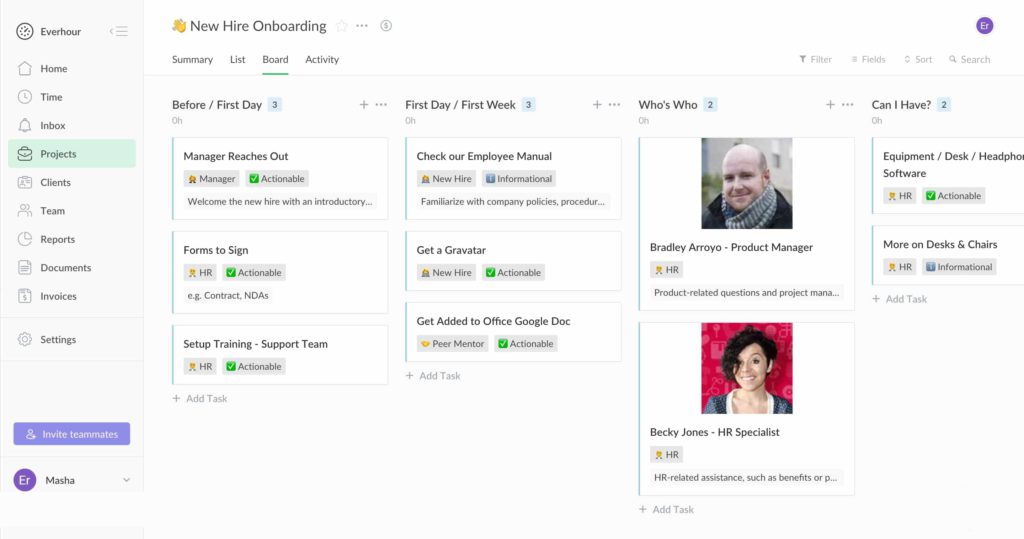
Step 2: Enable time tracking for onboarding activities
Tracking time spent on onboarding helps HR teams identify bottlenecks and improve efficiency. With Everhour’s time tracker, you can:
- Start timers for each task to see how long new hires spend on paperwork, training, or setup
- Monitor the average onboarding time to refine processes
- Compare the time spent by different hires to identify areas that need more focus
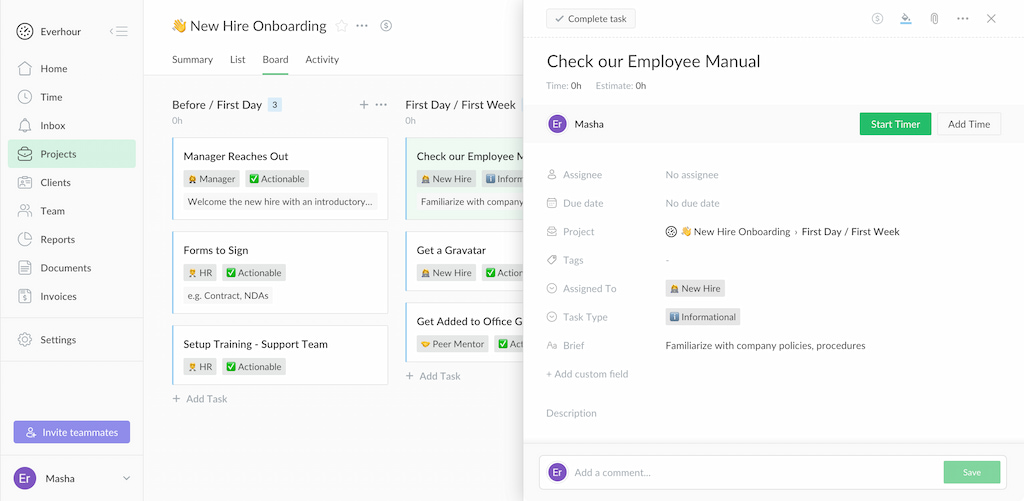
Step 3: Generate reports for insights
Everhour’s reporting features allow you to analyze onboarding performance, including:
- Time breakdown: See how much time employees spend on each category (e.g., IT setup, training)
- Completion rates: Track which tasks are consistently delayed or completed on time
- Manager insights: HR teams can review reports to optimize the process for future hires
Step 4: Customize for different onboarding types
The template can be adapted for various onboarding scenarios, such as:
- Remote employees: Add virtual meeting links, digital tool access, and time tracking for remote training
- Interns: Include mentorship programs, time spent on learning modules, and budgeted training hours
- Clients: Modify sections for product training, account setup, and project onboarding
By integrating time tracking, reporting, and budgeting into your Everhour onboarding template, you create a data-driven, optimized onboarding process that improves efficiency, reduces costs, and enhances the new hire experience.
How to Create and Customize an Onboarding Template in Notion
Notion is a flexible tool for building onboarding templates that help new employees get up to speed while keeping everything organized in one place. With embedded time tracking, task management, and collaboration features, Notion makes onboarding smooth and efficient.
Step 1: Set up an onboarding database
Start by creating a Notion database with key onboarding steps. Use tables, boards, or checklists to structure tasks and track progress. Categories to include:
Preboarding – Prepare everything before the new hire’s first day:
- Send welcome email
- Complete HR paperwork
- Set up IT accounts (email, Slack, Notion)
- Assign a mentor or buddy
First day/week – Essential tasks for getting started:
- Meet the team (schedule intro calls or office tour)
- Review company handbook and policies
- Set up tools
- Time tracking setup in Notion (or integrate with Everhour)
Role-specific training – Job-related resources and expectations:
- Overview of responsibilities and KPIs
- Initial projects or shadowing sessions
- Links to training materials
Company culture & policies – Help the new hire feel included:
- Company values, mission, and goals
- Workplace etiquette and expectations
- Social events and team-building activities
FAQ & resources – Quick access to important information:
- Who to contact for IT, HR, payroll
- Office layout or remote work policies
- Internal tools and workflows
Check-ins & feedback – Ensure smooth onboarding with progress tracking:
- 30-day, 60-day, and 90-day check-ins
- Feedback form to improve the onboarding process
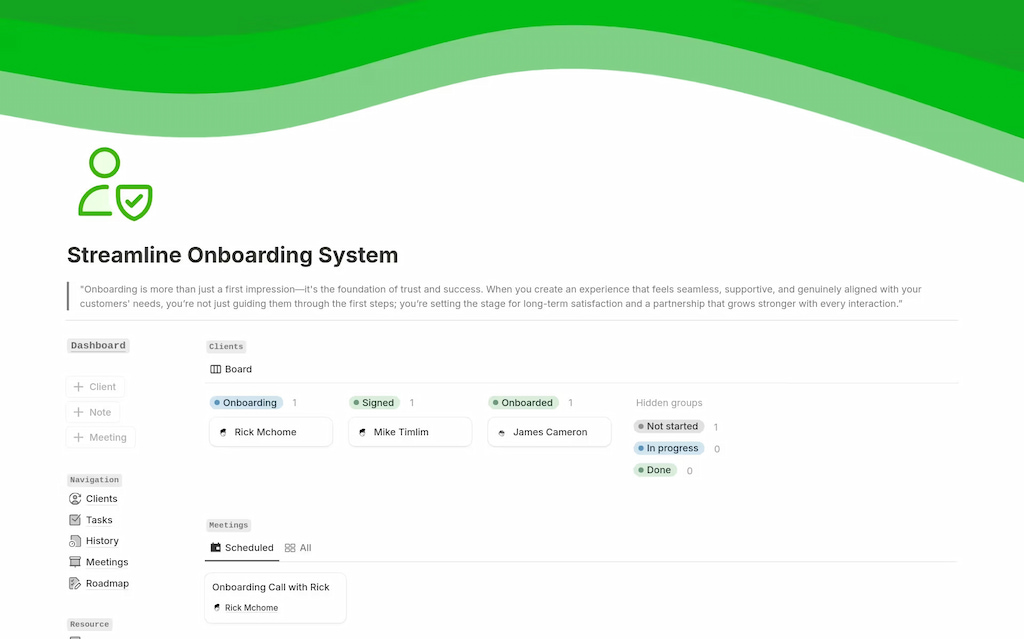
Step 2: Customize with templates and automations
Notion allows you to create reusable templates to standardize onboarding. You can:
- Create a task template with all onboarding steps pre-filled
- Use relational databases to link new hires to training materials or mentors
- Embed Everhour for time tracking to measure onboarding efficiency
Step 3: Automate and integrate
- Set reminders for upcoming tasks (e.g., first-week check-in)
- Integrate Notion with Slack to notify managers when a task is completed
- Embed time tracking with Everhour for reporting and optimization
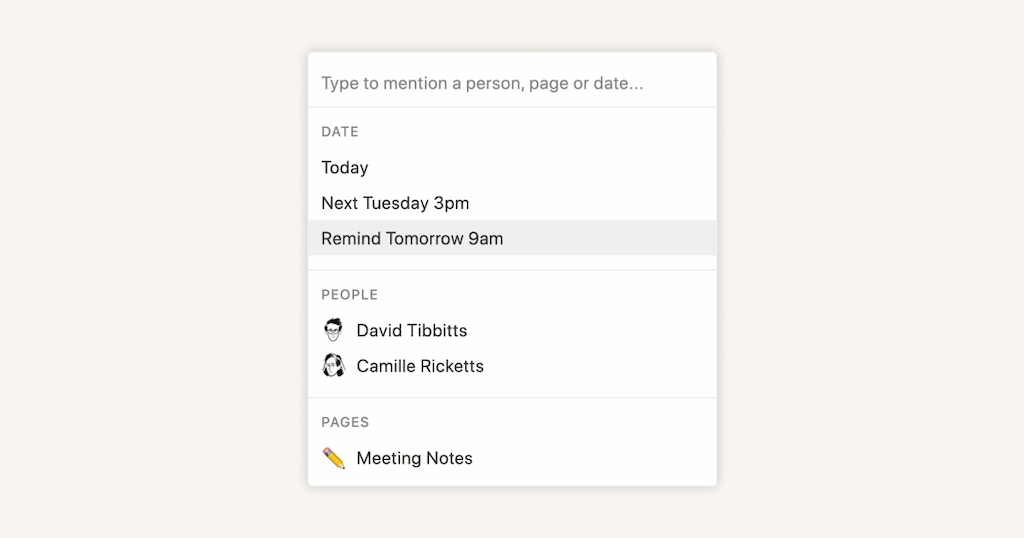
Step 4: Generate reports and optimize
- Analyze onboarding completion rates using Notion’s database views
- Measure time spent on different stages to streamline the process
- Use insights to improve future onboarding and identify common bottlenecks
How to Create and Customize an Onboarding Template in Asana
Asana is a powerful tool for structuring and automating the onboarding process. With customizable task lists, due dates, and collaboration features, it helps ensure that every new hire receives a smooth and consistent introduction to their role.
Step 1: Set up your onboarding template
To create an onboarding template in Asana, start by setting up a project and breaking it into key sections:
- Preboarding tasks – paperwork, IT setup, welcome email
- First day & first week – introductions, training, company overview
- Role-specific training – job expectations, tools, workflows
- Company culture & policies – values, workplace guidelines, communication norms
- Check-ins & feedback – scheduled reviews, Q&A sessions
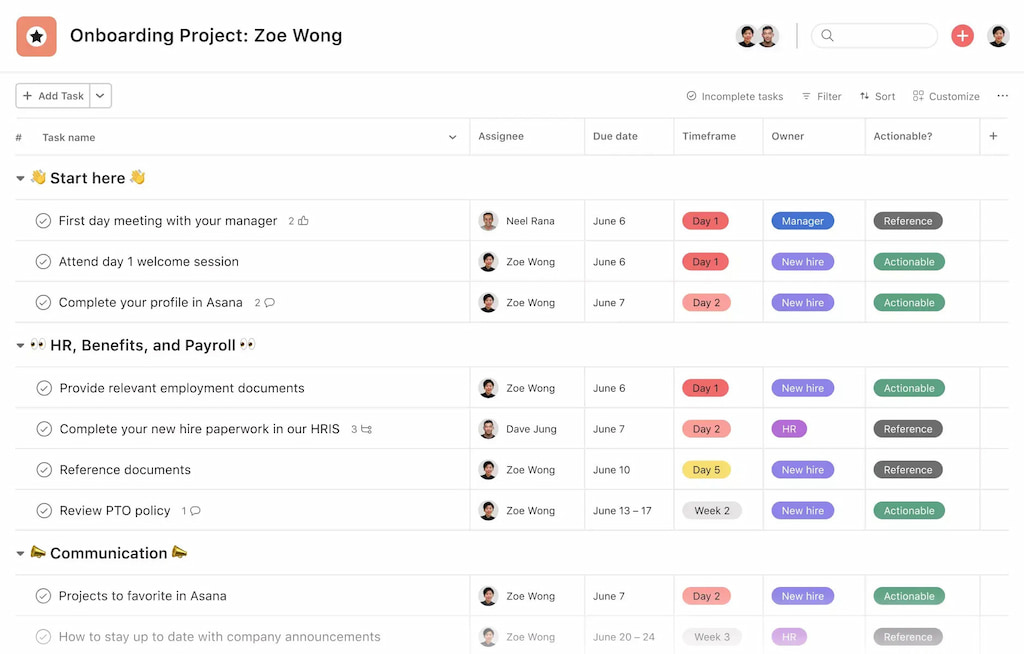
Step 2: Key features to include
- Task assignments – ensure HR, managers, and new hires know their responsibilities
- Due dates – keep onboarding on track and prevent delays
- Templates & automation – standardize the process for different roles
- Collaboration tools – comment threads and file attachments for easy communication
- Progress tracking – monitor onboarding completion rates
Step 3: Customize the template
Depending on your company’s needs, you can:
- Create different templates for employees, remote hires, interns, or clients
- Set up automated reminders to keep onboarding structured
- Integrate Asana with Everhour for time tracking or other tools for documentation
How to Create and Customize an Onboarding Template in Trello
Trello’s visual board system makes it easy to track the onboarding process and ensure new hires complete all necessary steps. By organizing tasks into lists and using automation, companies can streamline onboarding and provide a clear structure for new employees.
Step 1: Set up the onboarding board
Create a Trello board with lists to represent different stages of onboarding, for example, like these ones:
- Preboarding – paperwork, IT setup, welcome email
- First day & first week – introductions, office tour, training sessions
- Role-specific training – job expectations, key responsibilities
- Company policies & culture – mission, values, workplace guidelines
- Who to ask – key contacts for HR, IT, and team leads
- Check-ins & feedback – scheduled progress reviews, feedback sessions
- Completed – tasks the new hire has finished
Step 2: What to include
- Cards for each task – with descriptions, attachments, and due dates
- Labels for different categories – such as HR, IT, training, and culture
- Checklists – for multi-step processes like setting up accounts
- Automations with Butler – to move tasks when completed
- Trello Power-ups – integrate with Everhour for time tracking or Slack for notifications
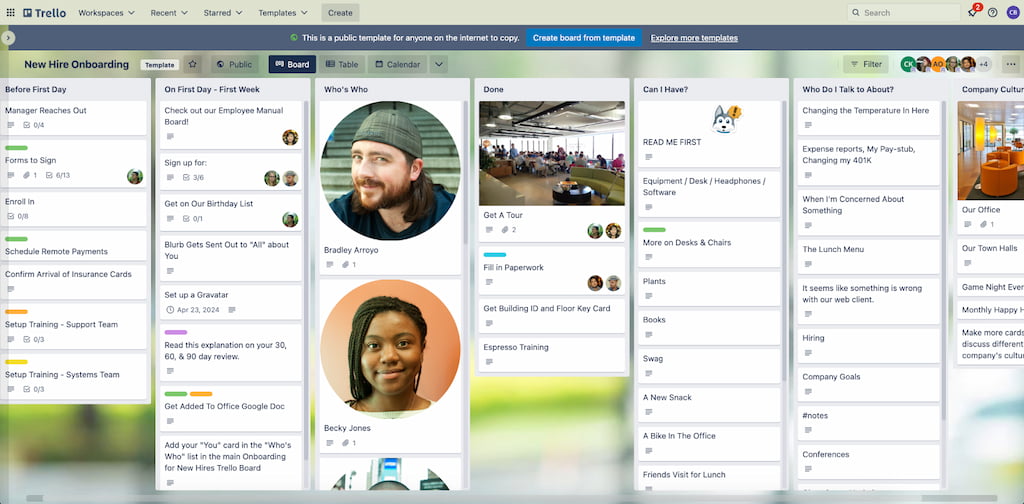
Step 3: Customize your template
- Create different boards for new employees, remote hires, interns, or clients
- Add a welcome message card with essential resources
- Use due dates and reminders to keep onboarding on schedule
With a Trello onboarding template, companies can keep the process organized, track progress visually, and ensure no step is overlooked.
Conclusion
An onboarding template helps streamline the process of welcoming new employees, ensuring they receive the information, training, and support they need. Whether using Everhour, Notion, Trello, or Asana, a structured template improves efficiency, keeps tasks organized, and enhances the new hire experience.
By customizing templates to fit specific roles—such as new employees, remote hires, interns, or clients—businesses can create a seamless onboarding journey. Implementing an onboarding template saves time, reduces confusion, and sets up employees for long-term success.

